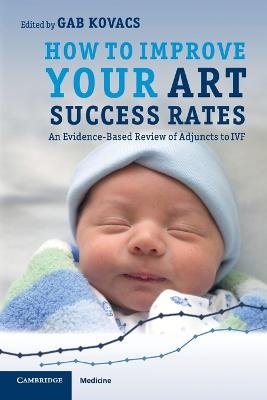
How to Improve your ART Success Rates
Cambridge University Press (Verlag)
978-1-107-64832-6 (ISBN)
IVF is now established worldwide as a clinical service. Units are striving to improve their success rates, and many treatments are being advocated as 'yet another breakthrough'. The purpose of this book is to help clinicians to evaluate each of these new treatments. Each chapter is written by a recognized international expert in the field and the chapters are short and succinct, summarizing the latest evidence-based information for each topic and treatment. Sections cover patient selection and preparation, the role of AIH before IVF, stimulation, monitoring, laboratory techniques, embryo transfer, ancillary treatments and assessment of results. How to Improve your ART Success Rates: An Evidence-Based Review of Adjuncts to IVF is essential reading for all clinicians working with infertility and assisted reproduction, and is also a valuable addition to any medical library.
Gab Kovacs is International Medical Director, Monash IVF, and Professor of Obstetrics and Gynaecology, Monash University, Toorak, Victoria, Australia.
Preface; Part I. Patient Selection and Preparation: 1. Pre-treatment hormone assessment to optimize IVF outcomes; 2. Role of pelvic ultrasonography in the selection and preparation of patients for in vitro fertilization (IVF); 3. Is pre-IVF laparoscopy/hysteroscopy worthwhile?; 4. The management of polyps and fibroids; 5. Immunological screening in women undergoing IVF; 6. Natural killer cell analysis; 7. Weight control; 8. Do vitamins and natural supplements improve pregnancy rates?; 9. PCO patients – is there a role for metformin; 10. An evidence-based medicine review of adjunctive treatments to IVF; 11. Management of hydrosalpinges; Part II. The Role of AIH Before IVF: 12. IUI – who should be treated and what are the expectations?; Part III. Stimulation: 13. What superovulation protocol is best?; 14. FSH vs hMG: gonadotrophins are gonadotrophins are gonadotrophins; 15. Agonists or antagonists for ovarian stimulation?; 16. Should the oral contraceptive pill or progestogens be used to schedule controlled ovarian hyperstimulation (COH)?; 17. Dehydroepiandrosterone (DHEA); 18. Luteinizing hormone supplementation in ART; 19. The use of growth hormone in IVF; 20. Prevention of ovarian hyperstimulation syndrome; 21. Is IVF the best approach?; Part IV. Monitoring: 22. How to monitor for the best results; Part V. Laboratory: 23. Sperm selection for assisted conception; 24. ICSI for all?; 25. Day of embryo transfer; 26. The beneficial effects of culture medium supplementation with growth factors in the development of human embryos in vitro; 27. Metabolomics; 28. Role of preimplantation genetic diagnosis (PGD); 29. Assisted hatching; Part VI. Embryo Transfer: 30. The role of ultrasound in embryo transfer; 31. Does dummy embryo transfer help?; 32. Does position matter?; 33. Embryo transfer catheters; 34. Bed rest after embryo transfer; 35. Intercourse around the time of embryo transfer; Part VII. Ancillary Treatments: 36. Heparin and aspirin as an adjunctive treatment in women undergoing IVF; 37. Place of oestrogen supplements in luteal phase after ET; 38. Progesterone supplements; 39. Place of corticosteroid co-treatment in IVF; 40. Immunotherapy for IVF implantation failure: 'just in case' or 'just in time'?; 41. Chinese herbs; 42. Adjuvant therapy to improve endometrial development – sildenafil and/or hyperbaric oxygen therapy; 43. The role of acupuncture in IVF; 44. Psychological perspectives on IVF treatment; 45. Future fertility for young women with cancer: protection, preservation or both?; Part VIII. Assessment of Results: 46. How to report IVF success rates; 47. Why do we need RCTs and how to design them?; 48. How to assess Cochrane reports; Index.
| Zusatzinfo | 21 Tables, black and white; 2 Halftones, black and white; 28 Line drawings, black and white |
|---|---|
| Verlagsort | Cambridge |
| Sprache | englisch |
| Maße | 156 x 235 mm |
| Gewicht | 470 g |
| Themenwelt | Medizin / Pharmazie ► Medizinische Fachgebiete ► Gynäkologie / Geburtshilfe |
| Studium ► 1. Studienabschnitt (Vorklinik) ► Histologie / Embryologie | |
| ISBN-10 | 1-107-64832-7 / 1107648327 |
| ISBN-13 | 978-1-107-64832-6 / 9781107648326 |
| Zustand | Neuware |
| Haben Sie eine Frage zum Produkt? |
aus dem Bereich


